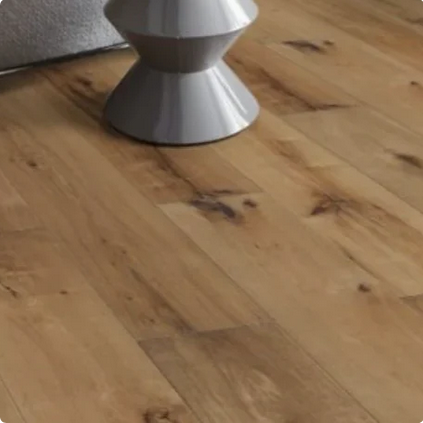
Author, Written by: P. Hirani (Wood flooring Expert)
Choosing between engineered wood and solid wood flooring can be a tough decision for British homeowners. Both offer the beauty of real timber, but the differences in construction, performance, and long-term suitability make it important to weigh up your options, especially when considering the UK’s changeable climate.
Let’s take a closer look at how engineered and solid wood flooring perform in British homes, from rainy winters to heated interiors.
Understanding the Basics
Solid wood flooring is made from a single piece of hardwood, such as oak or walnut. It is thick, strong, and can be sanded multiple times during its lifetime. It is known for its authenticity and traditional appeal.
Engineered wood flooring consists of a real hardwood top layer bonded to multiple layers of plywood or high density fibreboard. This construction provides added stability, making it more resistant to changes in temperature and moisture.
Performance in British Homes
The British climate is often damp and humid, with fluctuations in indoor temperatures due to central heating and underfloor heating systems. This can impact how wood floors behave over time.
Moisture Resistance
Solid wood is more sensitive to moisture. It can expand or contract significantly with humidity changes, potentially leading to warping or gaps between boards. This is why it is generally not recommended for basements, kitchens, or areas prone to dampness.
Engineered wood handles moisture better. Its layered structure reduces movement caused by humidity, making it more suitable for kitchens, conservatories, and even bathrooms when properly finished.
Underfloor Heating Compatibility
Underfloor heating is becoming more common in UK homes, particularly in modern builds and renovations. Solid wood is not the best match for this system, as it doesn’t react well to continuous temperature changes.
Engineered wood is the better option. Most ranges are specifically designed to work with underfloor heating, offering efficient heat transfer without damaging the floor.
Aesthetic Considerations
Both types offer the look of real wood, but there are subtle differences.
Solid wood often has deeper grain patterns and a more traditional appearance. It can be refinished more times over its lifetime, making it a good choice for long-term investments in living rooms or bedrooms.
Engineered wood looks nearly identical to solid wood once installed. It comes in a wide range of finishes, including brushed, oiled, and smoked effects, offering a stylish and versatile option for all areas of the home.
Installation Differences
Solid wood flooring usually requires professional installation. It is commonly nailed or glued down, and the boards need time to acclimate to the room’s conditions before being laid.
Engineered wood can be fitted more easily. It is often available in click-fit systems or tongue and groove profiles that can be floated over an underlay, glued, or even stapled. This makes it a popular choice for DIYers or quicker renovations.
Lifespan and Maintenance
Solid wood can last for decades and be sanded down multiple times, which helps in renewing its appearance. However, it requires more attention to moisture and routine care.
Engineered wood typically has a lifespan of 20 to 30 years, depending on the thickness of the top layer. While it can also be sanded, the number of times is limited. On the plus side, it generally needs less maintenance in fluctuating environments.
Cost Comparison
Solid wood tends to be more expensive, both in terms of material and installation. You are paying for the premium of a full hardwood product.
Engineered wood is more budget-friendly and offers better value for money in rooms where conditions may not suit solid wood. It also provides savings on installation and long-term upkeep.
Final Thought
For many British homeowners, engineered wood offers a practical balance between authentic wood aesthetics and adaptability to the UK climate. Solid wood remains a beautiful option for period properties or rooms where humidity is controlled, but engineered wood’s stability, ease of installation, and compatibility with underfloor heating make it a more flexible and climate-smart choice for modern homes.
If your goal is long-term durability without compromising on style, engineered wood may be the better fit for most British households.
About Author:
Peter H. is a flooring product expert who knows all about different types of flooring materials. He shares his knowledge in blogs to help readers make the best choices for their spaces.
